Elemental House adds a Danish twist to a 1970s London house
Named the winner of Don't Move, Improve 2025, Archmongers' Elemental House transforms a 1970s terraced house in London's Hackney into a functional, light-filled, Scandinavian-inspired family home
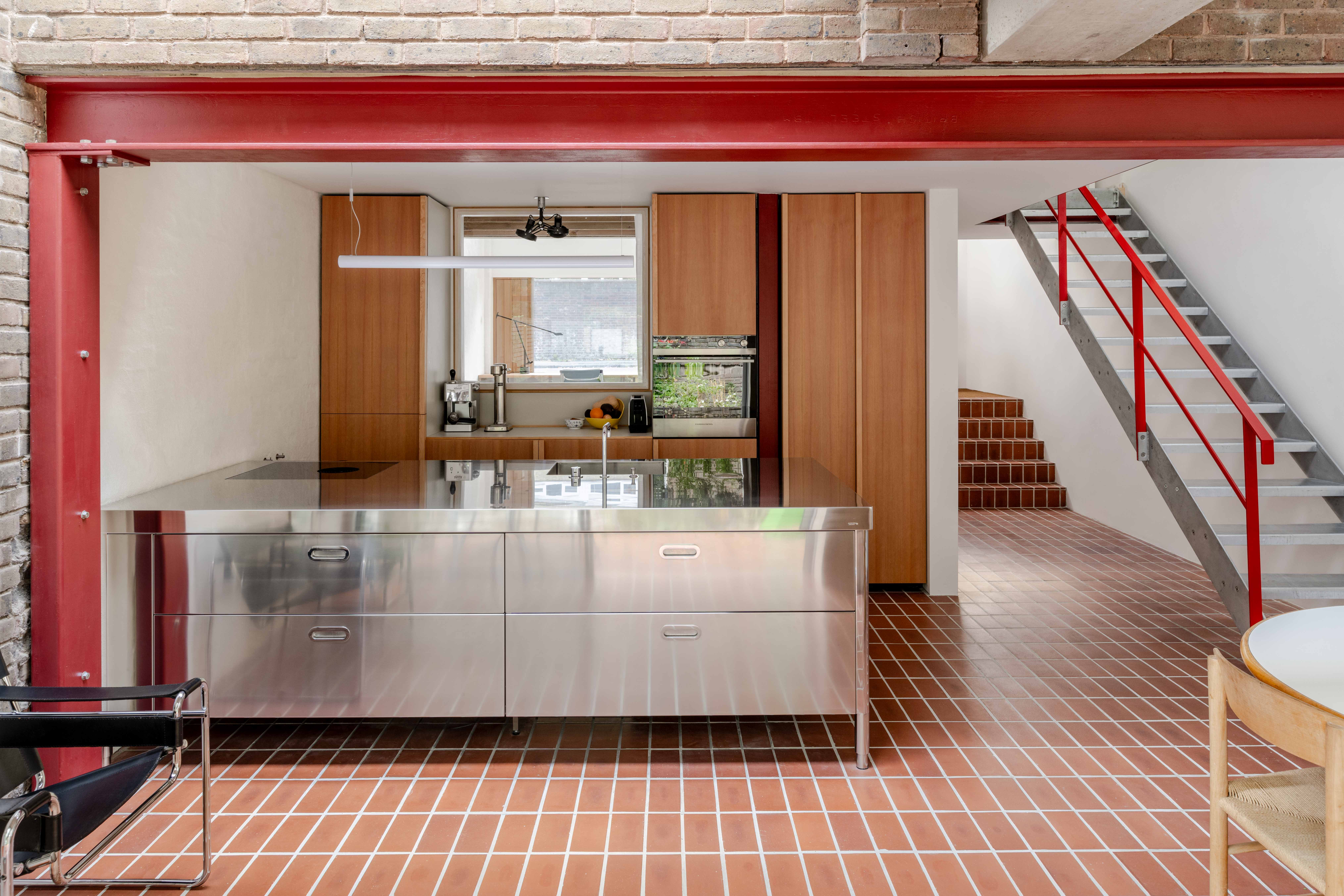
Elemental House has been named the winner of Don't Move Improve 2025.
The 1970s split-level home that became Elemental House was a perfect match for Johan Hybschmann, director at Archmongers, a London practice specialising in residential retrofit and modernist architecture houses that is known for its renovation of a 1972 apartment in the Barbican and Little Browning, a late 1960s home on Forest Hill’s Dulwich Estate named the winner of the Don’t Move, Improve 2022 competition.
No other buyer could see past the dangling wires and scurrying mice of this house in London's Clapton, which had been left untouched since the 1970s. But the potential was clear for Hybschmann and his wife, Anita Freeman, who soon set about turning the dark brick terraced house into a spacious, light-filled home swathed in greenery.

The nondescript street façade, once overshadowed by a front garage and concrete driveway, now boasts new frameless glazing, a red metal front door canopy and matching handrail, and period-appropriate textured flint panels replacing the garage door. Meanwhile, a series of planters and shrubs soften the house’s rectangular lines.
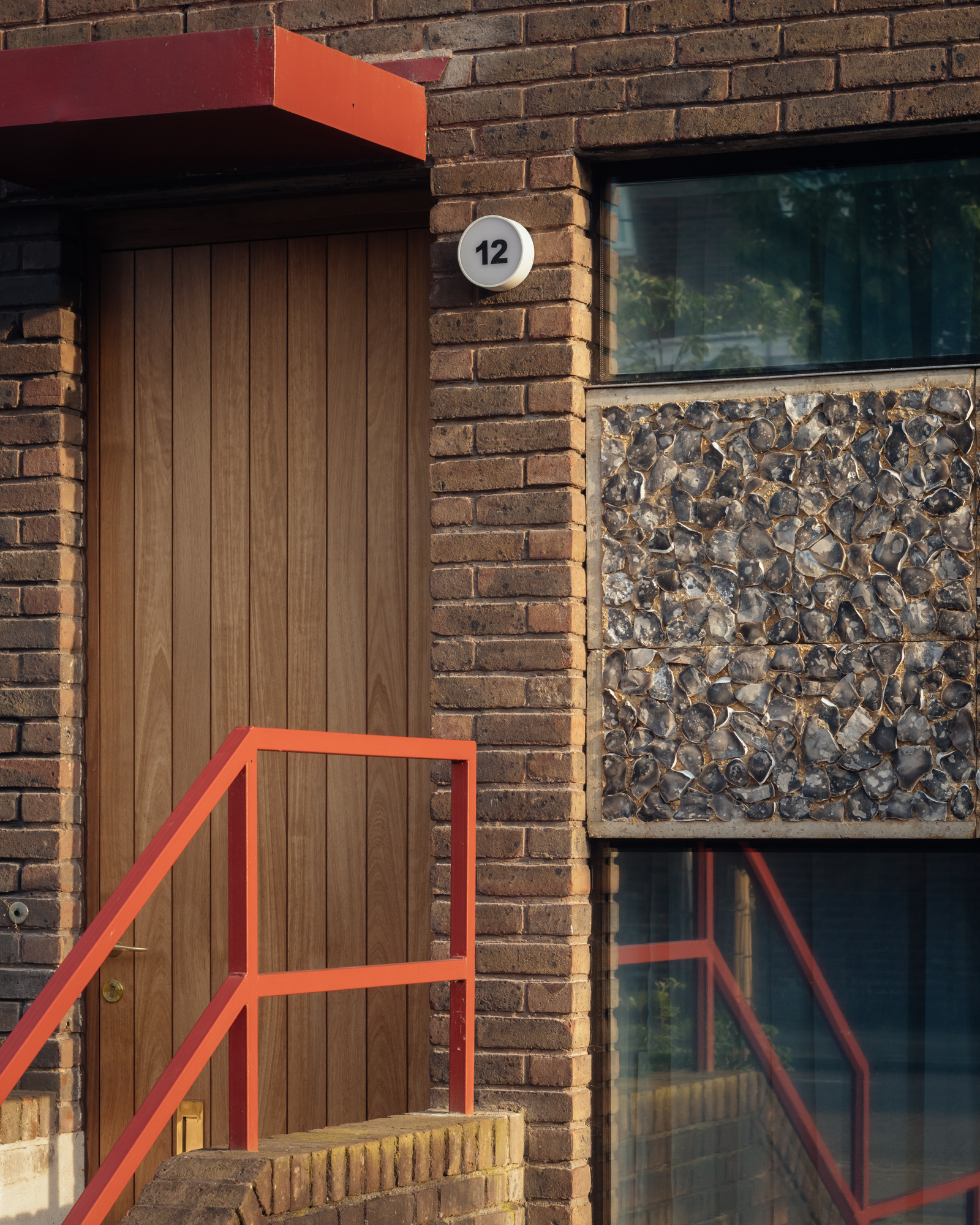
Inside, Hybschmann and Archmongers co-founder Margaret Bursa have retained the robust masonry, timber framework and exposed concrete elements of the original building, but made the space more generous by converting the garage into a bedroom, and adding a new concrete extension, cast in-situ at the rear of the property, to create a large kitchen and dining space.

‘We knew the house had the right DNA to become a special place to live, but it turned out to be an even stronger framework than expected, with the house itself guiding the significant transformation, deploying bold forms and honest self-finished materials to enhance what was originally there,’ says Hybschmann. ‘It was rewarding to work in this way and although the house has been radically changed, it still very much feels like the same house, nestled in its terrace.’

Elemental House is spread over three floors and includes a ground-floor kitchen and guest bedroom, a first-floor lounge, and two top-floor bedrooms, with two half-levels housing a small study and family bathroom. Archmongers’ approach focuses on using exposed materials, and its design scheme here employs a simple palette of existing brick, galvanised steel, cast concrete and timber.
Receive our daily digest of inspiration, escapism and design stories from around the world direct to your inbox.
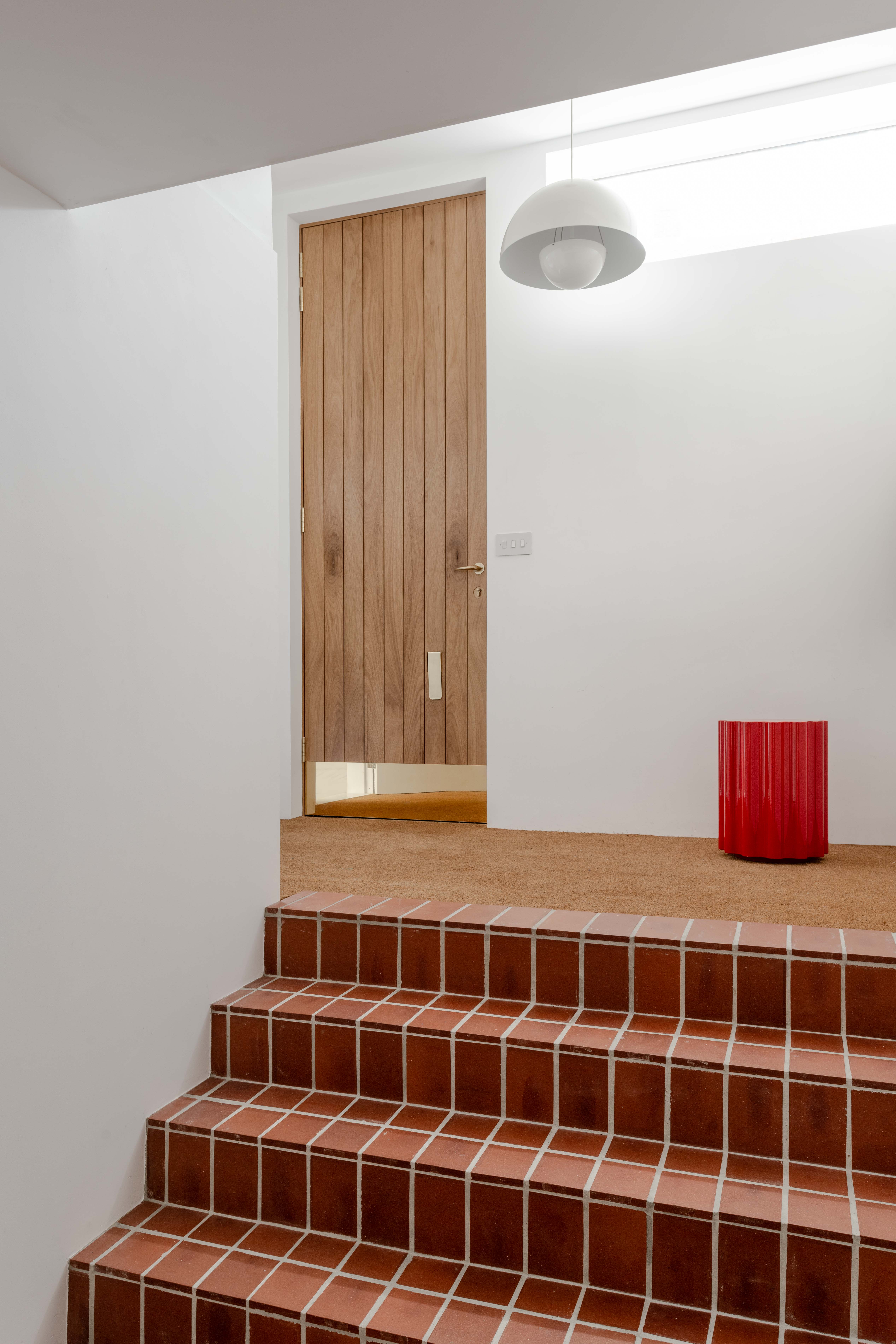
To make the most of the original materials and structure, plasterboard walls and the underside of the stairs have been removed, while strategically placed internal windows flood the interior with natural light. Particularly successful are the bedrooms, where removing the loft space has revealed the original timber frame and created high-ceilinged spaces that feel much bigger than they actually are.
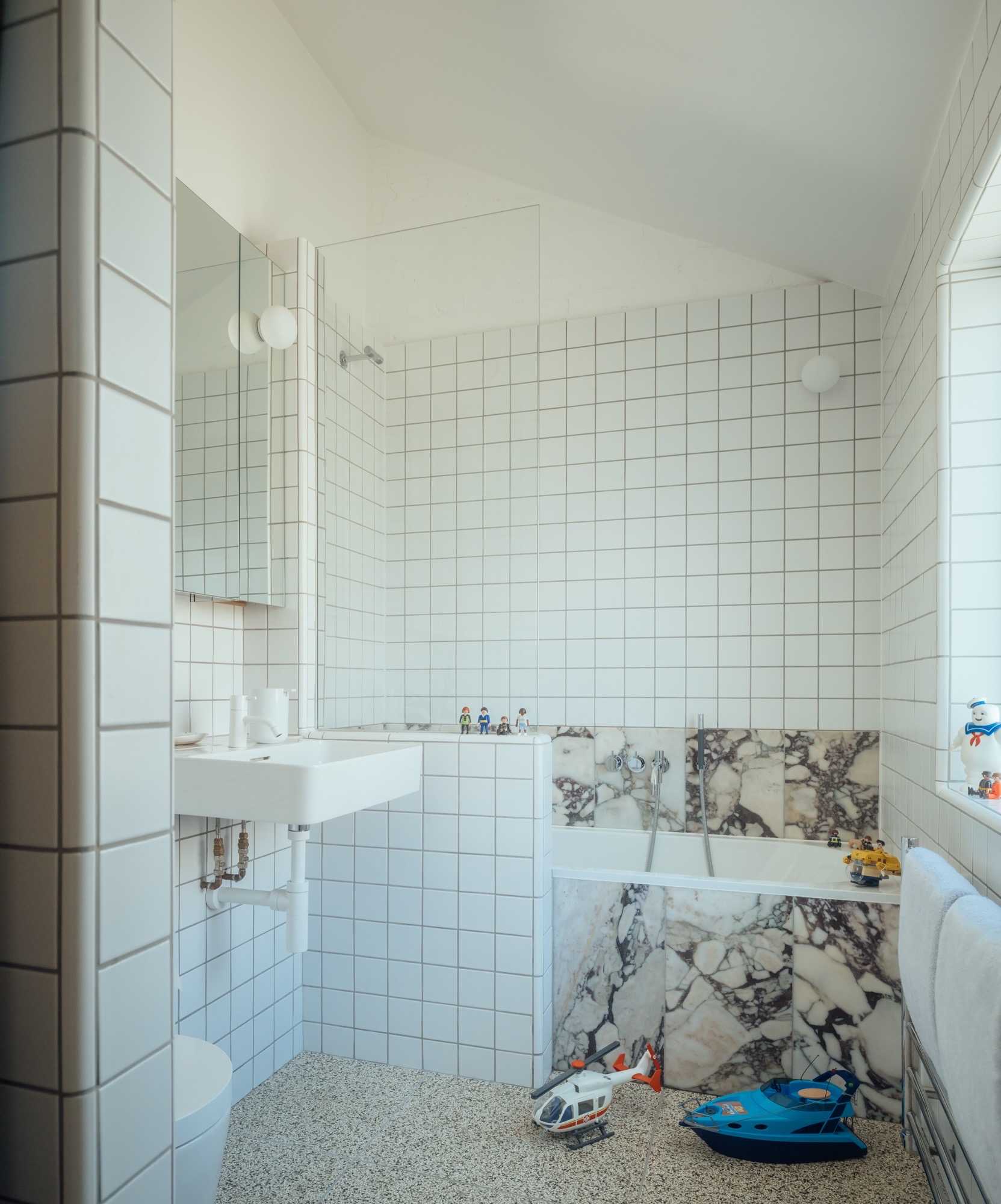
The grey brick, white-washed walls, natural timber and terracotta tiles nod to Hybschmann’s key inspiration, modernist buildings in his native Denmark, specifically Wohlert’s Louisiana Museum of Modern Art, Finn Juhl's house in Ordrup, and Arne Jacobsen’s Søholm houses – and Aalto’s homes in Finland.
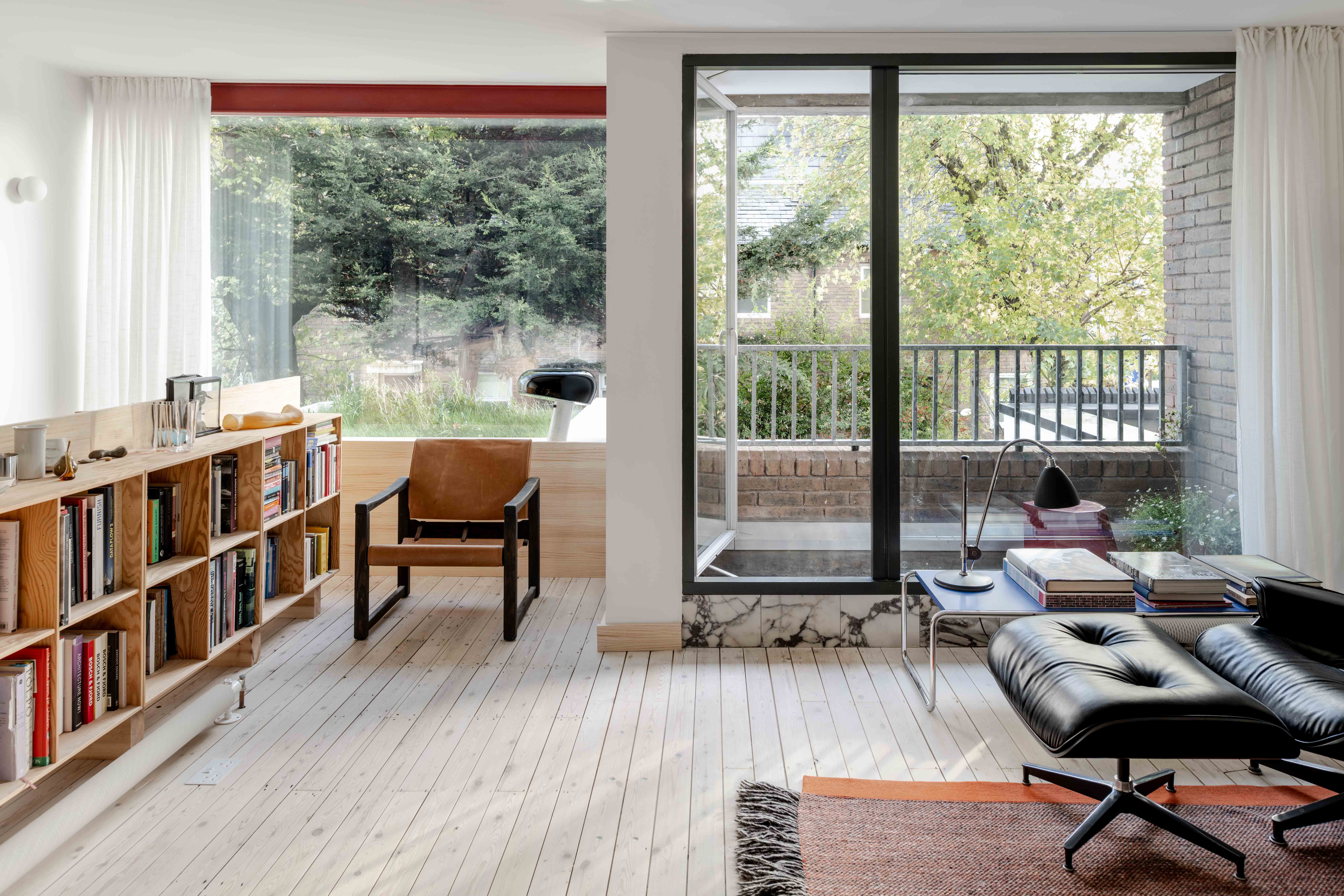
Carefully crafted joinery throughout the house showcases different types of wood, from knotless pine for the bannisters and shelving to iroko for the front door and handrail, and Douglas fir for the bespoke kitchen cabinets, built by carpenter Jacob Alexander Studio. They are paired with a sturdy stainless steel kitchen island and an oil painting by Haidee Becker.

On the first floor, a picture window frames views of the new wildflower green roof, while the ground floor’s terracotta brick floor tiles extend outside to form an outdoor dining terrace, with sliding doors creating a seamless transition to the garden, which is planted with indigenous species and features a small pond to encourage wildlife.
Léa Teuscher is a Sub-Editor at Wallpaper*. A former travel writer and production editor, she joined the magazine over a decade ago, and has been sprucing up copy and attempting to write clever headlines ever since. Having spent her childhood hopping between continents and cultures, she’s a fan of all things travel, art and architecture. She has written three Wallpaper* City Guides on Geneva, Strasbourg and Basel.
-
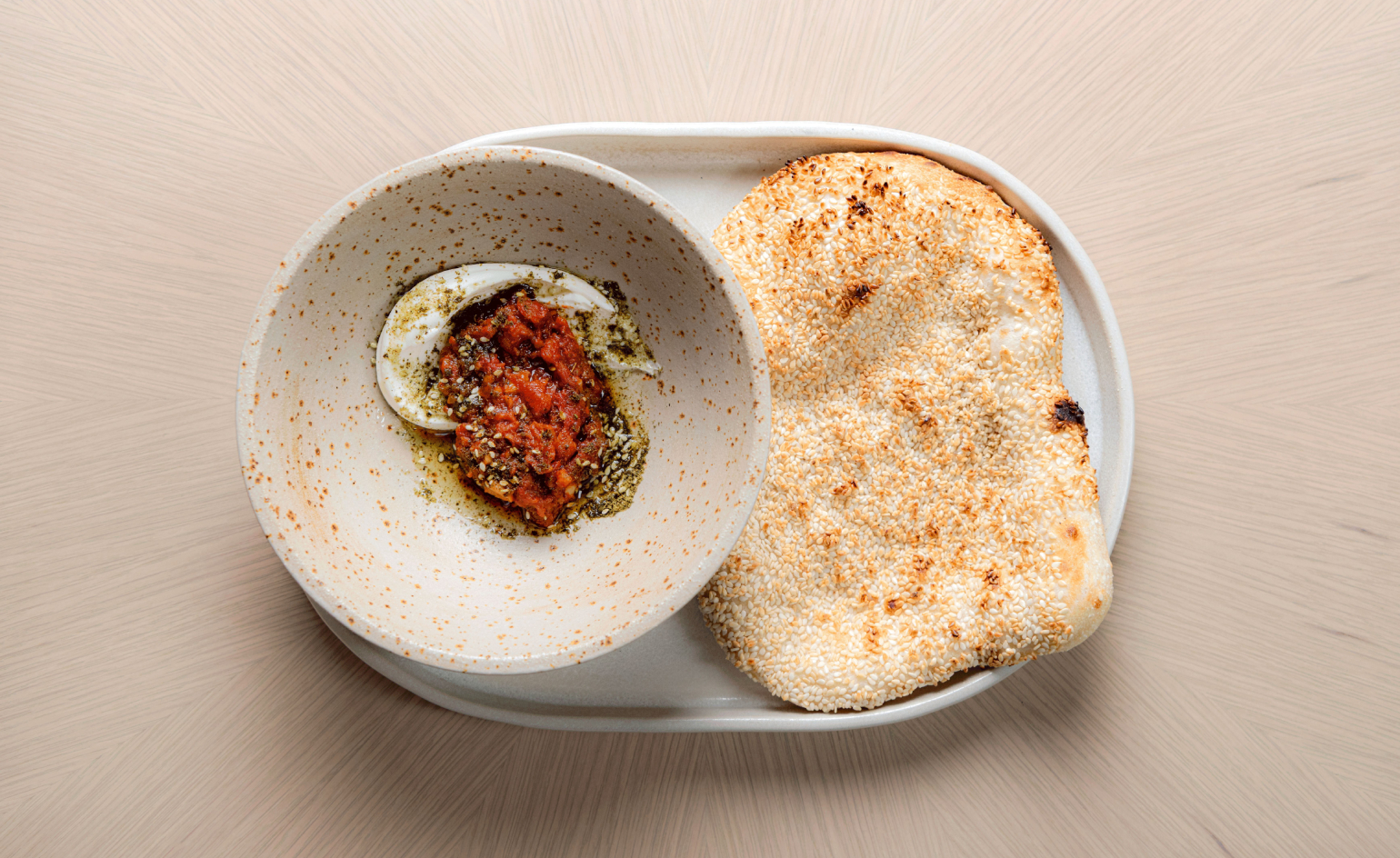 Nela is London's new stage for open-fire gastronomy
Nela is London's new stage for open-fire gastronomyA beloved Amsterdam import brings live-fire elegance to The Whiteley’s grand revival
-
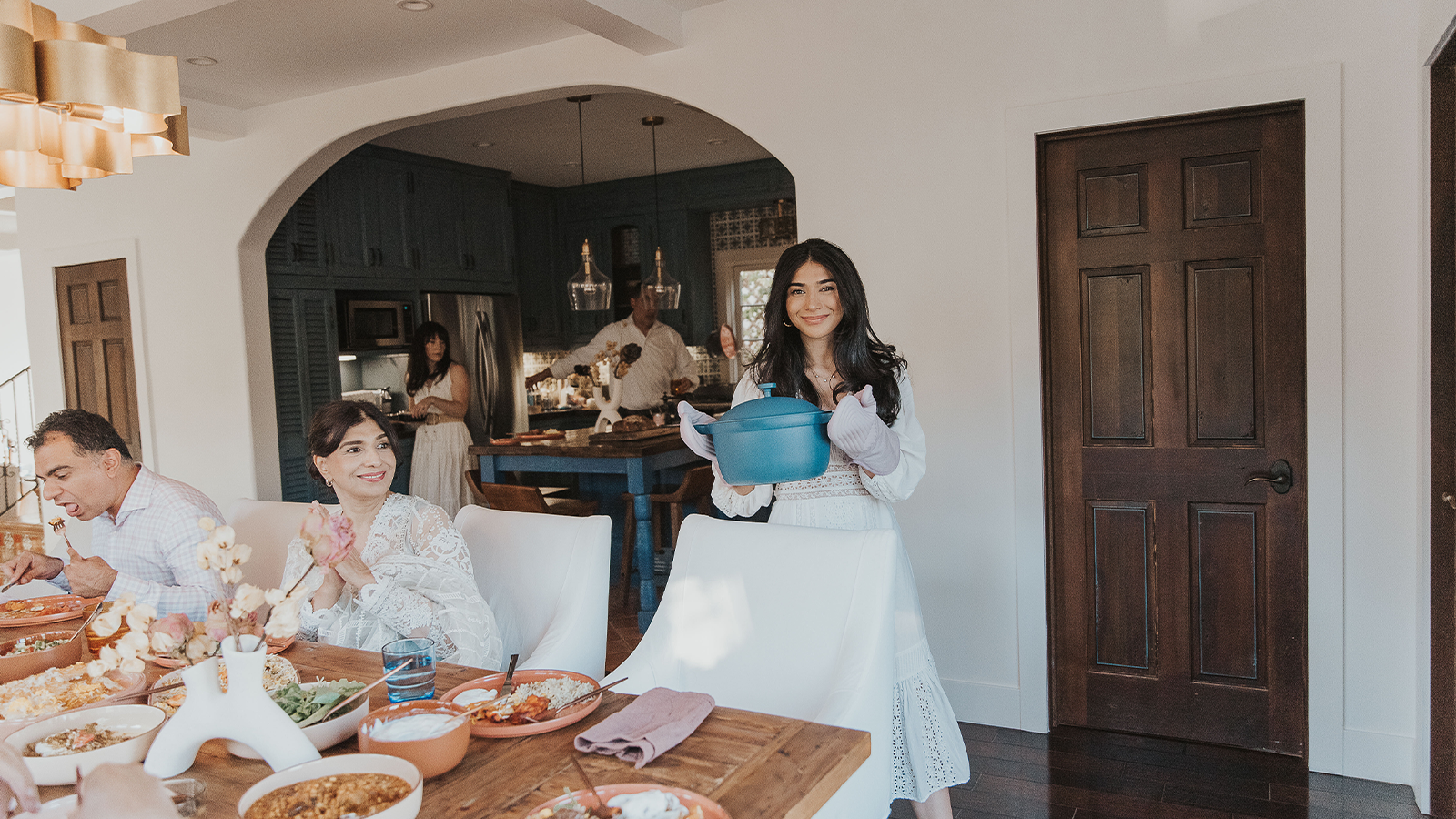 How we host: with Our Place founder, Shiza Shahid
How we host: with Our Place founder, Shiza ShahidWelcome, come on in, and take a seat at Wallpaper*s new series 'How we host' where we dissect the art of entertaining. Here, we speak to Our Place founder Shiza Shahid on what makes the perfect dinner party, from sourcing food in to perfecting the guest list, and yes, Michelle Obama is invited
-
 Matteo Thun carves a masterful thermal retreat into the Canadian Rockies
Matteo Thun carves a masterful thermal retreat into the Canadian RockiesBasin Glacial Waters, a project two decades in the making, finally surfaces at Lake Louise, blurring the boundaries between architecture and terrain
-
 The Architecture Edit: Wallpaper’s houses of the month
The Architecture Edit: Wallpaper’s houses of the monthFrom Malibu beach pads to cosy cabins blanketed in snow, Wallpaper* has featured some incredible homes this month. We profile our favourites below
-
 Meet Forefront, a cultural platform redefining the relationship between art and architecture
Meet Forefront, a cultural platform redefining the relationship between art and architectureForefront co-founder Dicle Guntas, managing director of developer HGG, tells us about the exciting new initiative and its debut exhibition, a show of lumino-kinetic sculptures in London
-
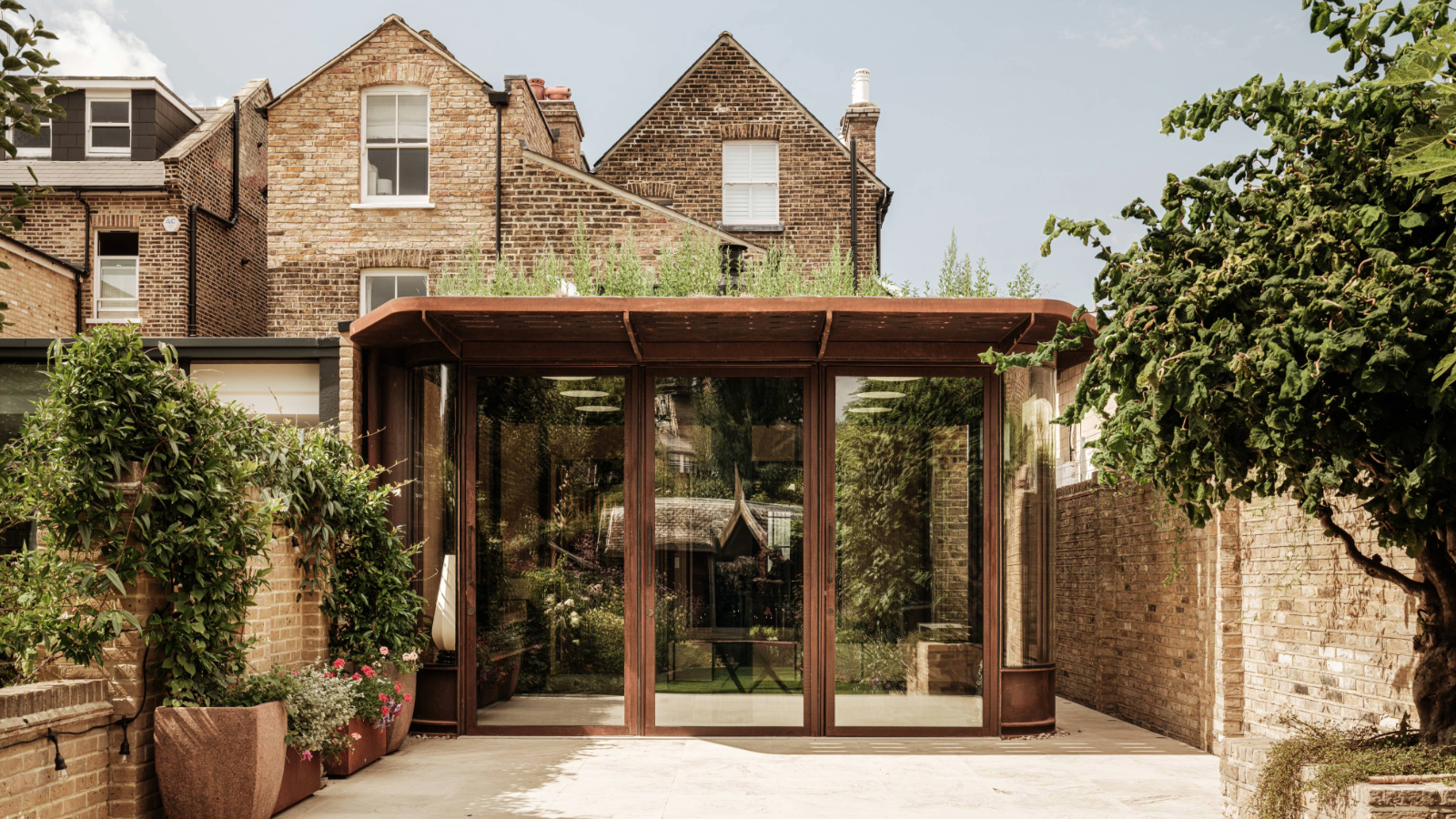 Corten curves and contemporary flair transform this terraced house in London
Corten curves and contemporary flair transform this terraced house in LondonCagni Williams Associates’ sensitive refurbishment of a south London Edwardian house features a striking and sustainable Corten steel extension
-
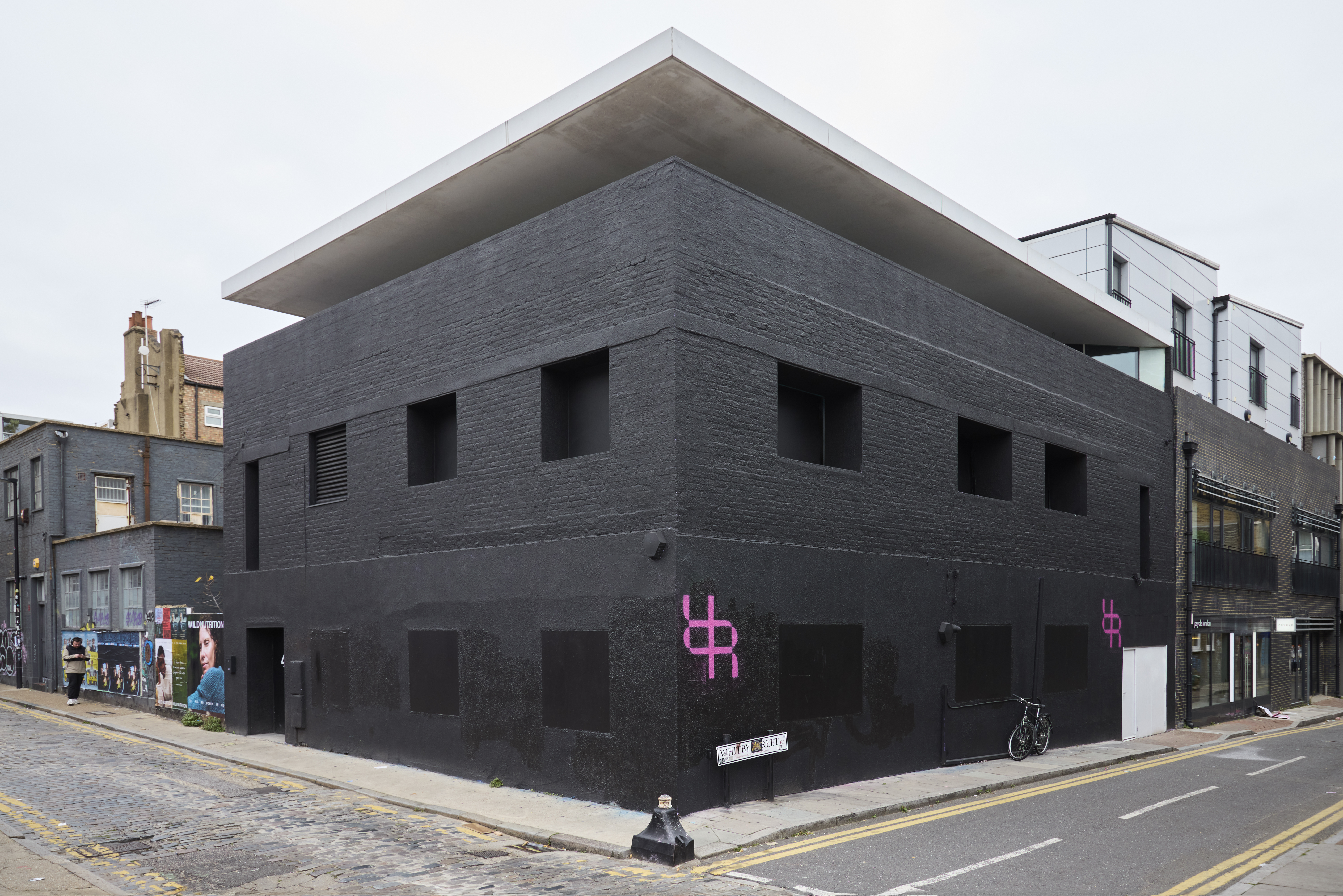 You may know it as ‘Dirty House’ – now, The Rogue Room brings 21st-century wellness to Shoreditch
You may know it as ‘Dirty House’ – now, The Rogue Room brings 21st-century wellness to ShoreditchThe Rogue Room – set in the building formerly known as Dirty House by Sir David Adjaye, now reinvented by Studioshaw – bridges wellness and culture in London's Shoreditch
-
 The architectural innovation hidden in plain sight at Frieze London 2025
The architectural innovation hidden in plain sight at Frieze London 2025The 2025 Frieze entrance pavilions launch this week alongside the art fair, showcasing a brand-new, modular building system set to shake up the architecture of large-scale events
-
 RIBA Stirling Prize 2025 winner is ‘a radical reimagining of later living’
RIBA Stirling Prize 2025 winner is ‘a radical reimagining of later living’Appleby Blue Almshouse wins the RIBA Stirling Prize 2025, crowning the social housing complex for over-65s by Witherford Watson Mann Architects, the best building of the year
-
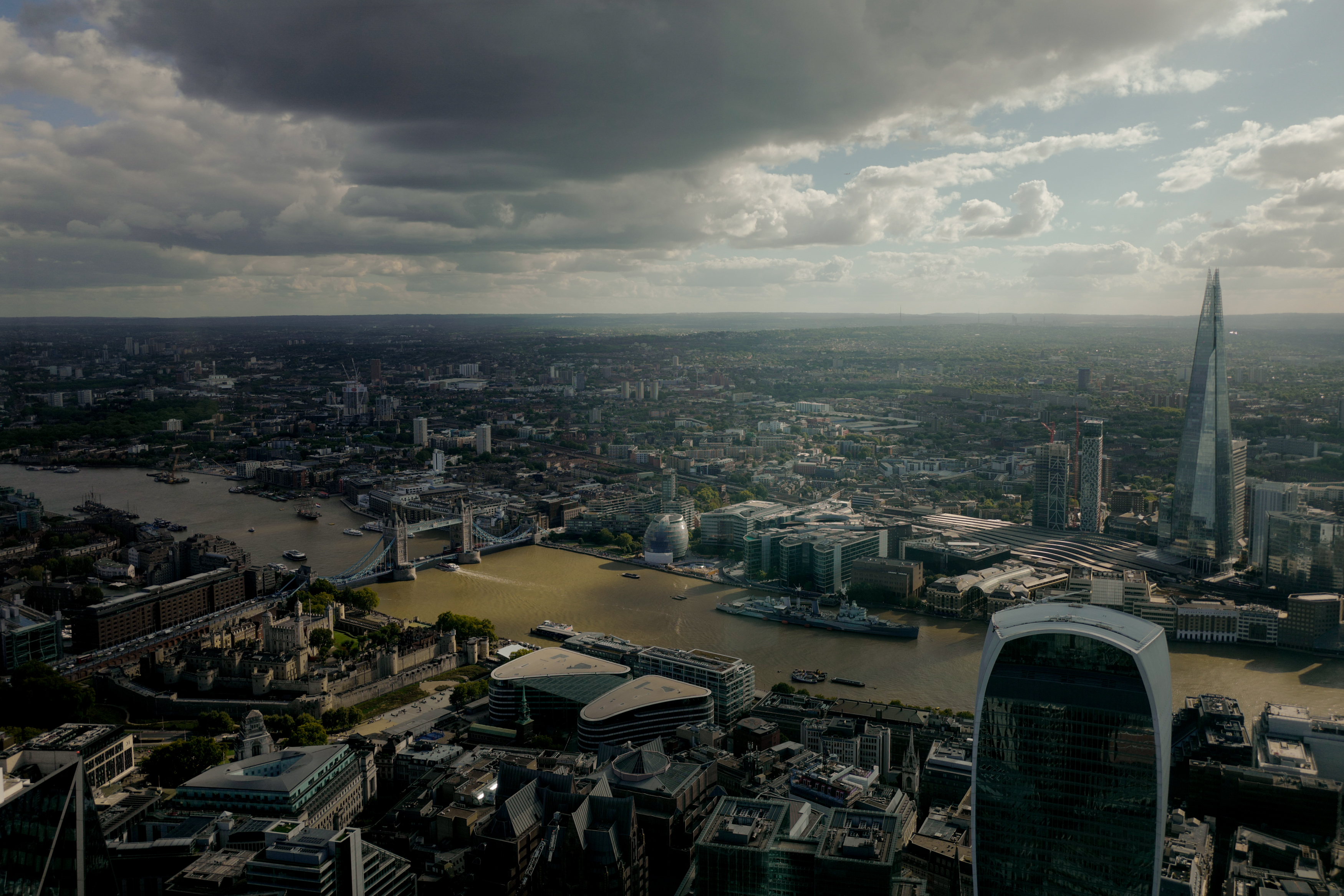 ‘Belonging’ – the LFA 2026 theme is revealed, exploring how places can become personal
‘Belonging’ – the LFA 2026 theme is revealed, exploring how places can become personalThe idea of belonging and what it means in today’s world will be central at the London Festival of Architecture’s explorations, as the event’s 2026 theme has been announced today
-
 Join us on a first look inside Regent’s View, the revamped canalside gasholder project in London
Join us on a first look inside Regent’s View, the revamped canalside gasholder project in LondonRegent's View, the RSHP-designed development for St William, situated on a former gasholder site on a canal in east London, has just completed its first phase